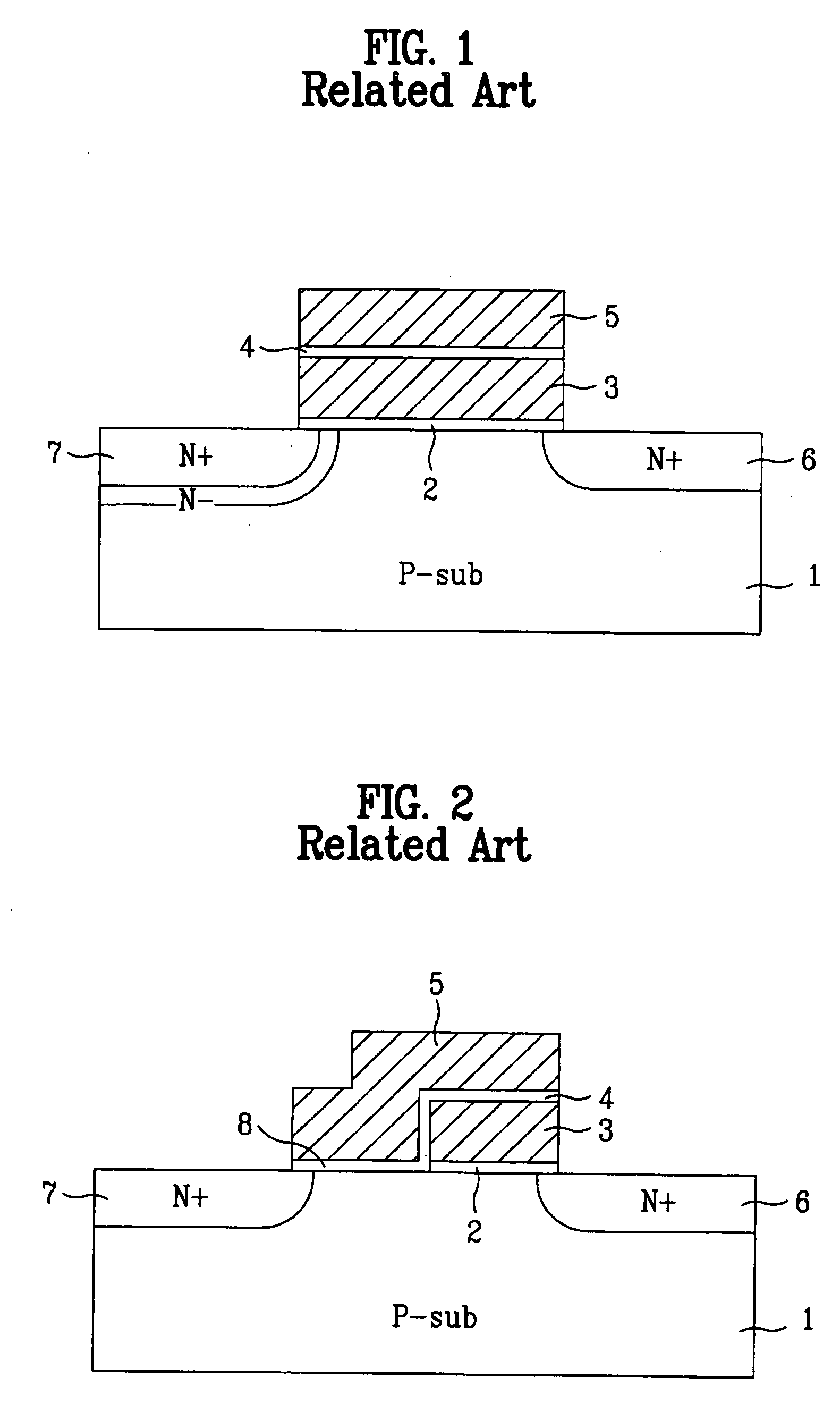Memory device and method for manufacturing the same
a memory device and memory technology, applied in semiconductor devices, digital storage, instruments, etc., can solve the problems of difficult to reduce the area of the cell, the cell threshold may be shifted, and the cell can be wiped excessively, so as to reduce the programming voltage, reduce the cell size, and reduce the programming voltage.
- Summary
- Abstract
- Description
- Claims
- Application Information
AI Technical Summary
Benefits of technology
Problems solved by technology
Method used
Image
Examples
first embodiment
[0029]FIG. 3A to FIG. 3G are cross sectional views of the process for manufacturing a split gate flash EEPROM cell according to the present invention.
[0030] As shown in FIG. 3A, a semiconductor substrate 200 may have therein an active area and a field area, defined at least in part by a device isolation layer (not shown). Then, a buffer oxide (e.g., silicon dioxide) layer 201 and an insulating layer 202 are sequentially deposited on the semiconductor substrate 200. After that, a first photoresist 215 is coated on the insulating layer 202, and then the first photoresist 215 is patterned on the insulating layer 202 by a conventional photolithography (e.g., exposure and development) process. At this time, the insulating layer 202 may comprise a nitride layer (e.g., silicon nitride).
[0031] As shown in FIG. 3B, the insulating layer 202, the buffer oxide layer 201 and the semiconductor substrate 200 are etched to a predetermined depth (e.g., a trench depth) using the patterned first phot...
second embodiment
[0041]FIG. 4A to FIG. 4G are cross-sectional views of an exemplary process for fabricating a split gate (flash) EEPROM cell according to the present invention.
[0042] As shown in FIG. 4A, a semiconductor substrate 300 generally contains an active area and a field area, defined at least in part by a device isolation layer (not shown). In this state, a buffer oxide layer 301 and an insulating layer 302 are sequentially deposited on the semiconductor substrate 300. Then, a first photoresist 315 is coated on the insulating layer 302, and the first photoresist 315 is patterned by a conventional photolithography (e.g., exposure and development) process. As for insulating layer 202 (e.g., FIG. 3A), the insulating layer 302 may comprise a nitride layer.
[0043] Referring to FIG. 4B, the insulating layer 302, the buffer oxide layer 301 and the semiconductor substrate 300 are etched to a predetermined depth by using the patterned first photoresist 315 as a mask, thereby forming a trench T1 in a...
PUM
 Login to View More
Login to View More Abstract
Description
Claims
Application Information
 Login to View More
Login to View More - R&D
- Intellectual Property
- Life Sciences
- Materials
- Tech Scout
- Unparalleled Data Quality
- Higher Quality Content
- 60% Fewer Hallucinations
Browse by: Latest US Patents, China's latest patents, Technical Efficacy Thesaurus, Application Domain, Technology Topic, Popular Technical Reports.
© 2025 PatSnap. All rights reserved.Legal|Privacy policy|Modern Slavery Act Transparency Statement|Sitemap|About US| Contact US: help@patsnap.com



